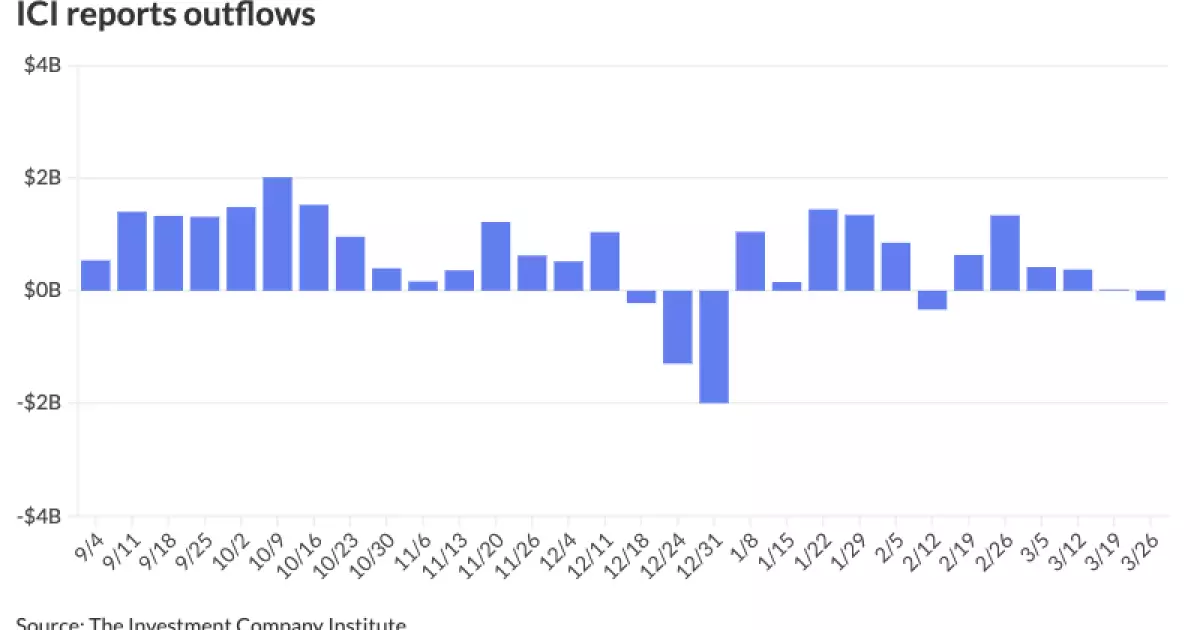As President Trump strode into the Rose Garden, the market braced itself for what was expected to be a seismic shift in trade policy. His announcement of sweeping tariffs has ignited a flurry of volatility across U.S. Treasuries and equities. While municipal yields had a seemingly stable day, the general sentiment in the market was anything but calm, echoing an undercurrent of uncertainty that has plagued it for weeks. It raises a crucial question: how much longer can investor confidence withstand the weight of political posturing?
The predictability of market movements has succumbed to fear, amplifying volatility rather than being grounded in sound economic fundamentals. The mere mention of tariffs sends ripples of anxiety through the business community, creating an atmosphere fraught with trepidation. The erratic back-and-forth of markets mirrors investor uncertainty, where political decisions increasingly overshadow traditional economic indicators.
Trade Policy and Business Sentiment at Odds
James Pruskowski, chief investment officer at 16Rock Asset Management, offers insight into this dilemma, stating that confidence is “crumbling” amid policy instability. With the dual forces of tax reform and burgeoning tariffs affecting overall business sentiment, it seems today’s economic climate is less about solid growth prospects and more about looming threats—both foreign and domestic.
Geopolitical instability, exacerbated by unpredictable trade decisions, adds another layer of complexity to the market landscape. The risks are escalating, and investors sense the potential for a downturn. Corporate leaders are no longer just concerned about how tariffs will affect their bottom lines; they’re grappling with the looming specter of recession. The latest warnings from major firms like FedEx serve as cautionary tales about what happens when operational challenges collide with macroeconomic headwinds.
An Economically Divided Nation
Despite the superficial health of the economy, deep fractures exist beneath the surface. Statistically, the current ratios of municipal bonds—67% for two-year, 71% for five-year, and 92% for thirty-year—suggest a market holding upon thin ice. The numbers signify a stability, yet the threads holding them together appear to fray as more players withdraw dampening overall liquidity. This curtails the ability of governments and institutions to thrive, unnecessarily subject to the whims of unfocused policies and partisan debates.
The Investment Company Institute (ICI) recently reported a significant outflow of $175 million in municipal bond funds amidst the turmoil. This suggests that investor sentiment isn’t simply fickle; it’s a reflection of growing unease with future returns in a climate marred by increased taxation and spending cuts. The whispered threats of capping the municipal bond tax exemption at 28% re-emerging creates waves of anxiety among state and local governments. The resulting pushback from advocacy groups signal the stakes involved; if a solution isn’t forged that respects fiscal responsibilities without compromising bond integrity, it could spell disaster for affected communities.
Markets Reacting to Fear Rather Than Fundamentals
It has become painfully clear that “fear, not fundamentals,” is driving the market, turning traders into reactionaries. Investors seem to pivot between hope and despair, constantly reevaluating their positions in light of new developments without grounding themselves in sound economic data.
With escalating uncertainty surrounding tariffs and international relations, markets are bound to react erratically. Proposals hanging in limbo can significantly undermine investor confidence. As uncertainty prevails, businesses hesitate to make long-term commitments or strategic decisions. This is the kind of environment that flees investment and discourages innovation—a scenario decidedly detrimental to the economic engine everyone hopes to maintain.
Investing in Certainty Amidst the Chaos
Translating this chaos into actionable financial strategies requires more than just a simplistic response to market trends. It demands a nuanced understanding of emerging risks and opportunities. Investors would do well to align themselves with resilient sectors that are less susceptible to fluctuations induced by tariffs. For instance, healthcare and technology companies with solid balance sheets might withstand market tremors better than more leveraged assets.
Moreover, now more than ever, investment strategies must be informed not solely by market indicators but by the broader narrative surrounding fiscal and economic policy. In a climate seemingly dominated by shortsightedness, taking a more visionary approach to investment planning may provide the safe harbor that many will seek as stability crumbles.
With political discord simmering and policy uncertainties lurking, only those who can cut through the noise with shrewd analysis will emerge from this tumultuous environment unscathed. The critical message is clear: to thrive under such conditions, one must navigate carefully, balancing risk with opportunity while remaining vigilant against the shifting tides of political agendas.


Leave a Reply